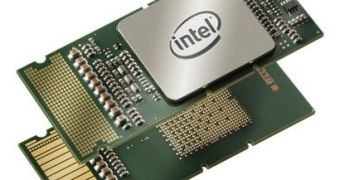Intel has kept saying that it won't be abandoning the Itanium processor platform and that it will push it forward alongside the Xeon server and data center chips. This decision may be getting reversed though.
Intel did not actually say it would kill the Itanium brand. Many Unix systems and, by extension, companies use the platform after all.
Intel did say it would not merge it with Xeon though, despite expressing such an intent previously.
The idea was to make a unified platform for mission-critical computers that would be compatible with both Itanium and Xeon CPUs (central processing units).
As part of that effort, the next-generation Kittson Itanium unit would have been designed on the 22nm or 14nm manufacturing process node.
Intel will not follow the plan though. Not only will there be no unified platform, for now, but Kittson will also not use those advanced processes.
Whether or not the idea is binned altogether remains to be seen. As Intel has been trying to enact it since the early 2000, abandoning it would make a lot of effort meaningless, so there is enough reason to still go through with the merger.
Chipzilla has also been adding mission-critical technologies to Xeon enterprise/expandable platforms.
Having a unified platform would greatly simplify server and software development for x86 CPUs.
At the other end of the issue is that, with Kittson Itanium using the same 32nm process as the one currently employed, the clock speed and core count advantages would be minor. Compatibility with Itanium 9500 “Poulson” sockets will be a boon, surely, but a 20% performance increase will likely not be sufficient.
“Intel has updated the definition of the next generation Itanium processor, code name ‘Kittson’. Kittson will be manufactured on Intel’s 32nm process technology and will be socket compatible with the existing Intel Itanium 9300/9500 platforms, providing customers with performance improvements, investment protection, and a seamless upgrade path for existing systems,” Intel's statement reads.
“The modular development model, which converges on a common Intel Xeon/Intel Itanium socket and motherboard, will be evaluated for future implementation opportunities.”

 14 DAY TRIAL //
14 DAY TRIAL //